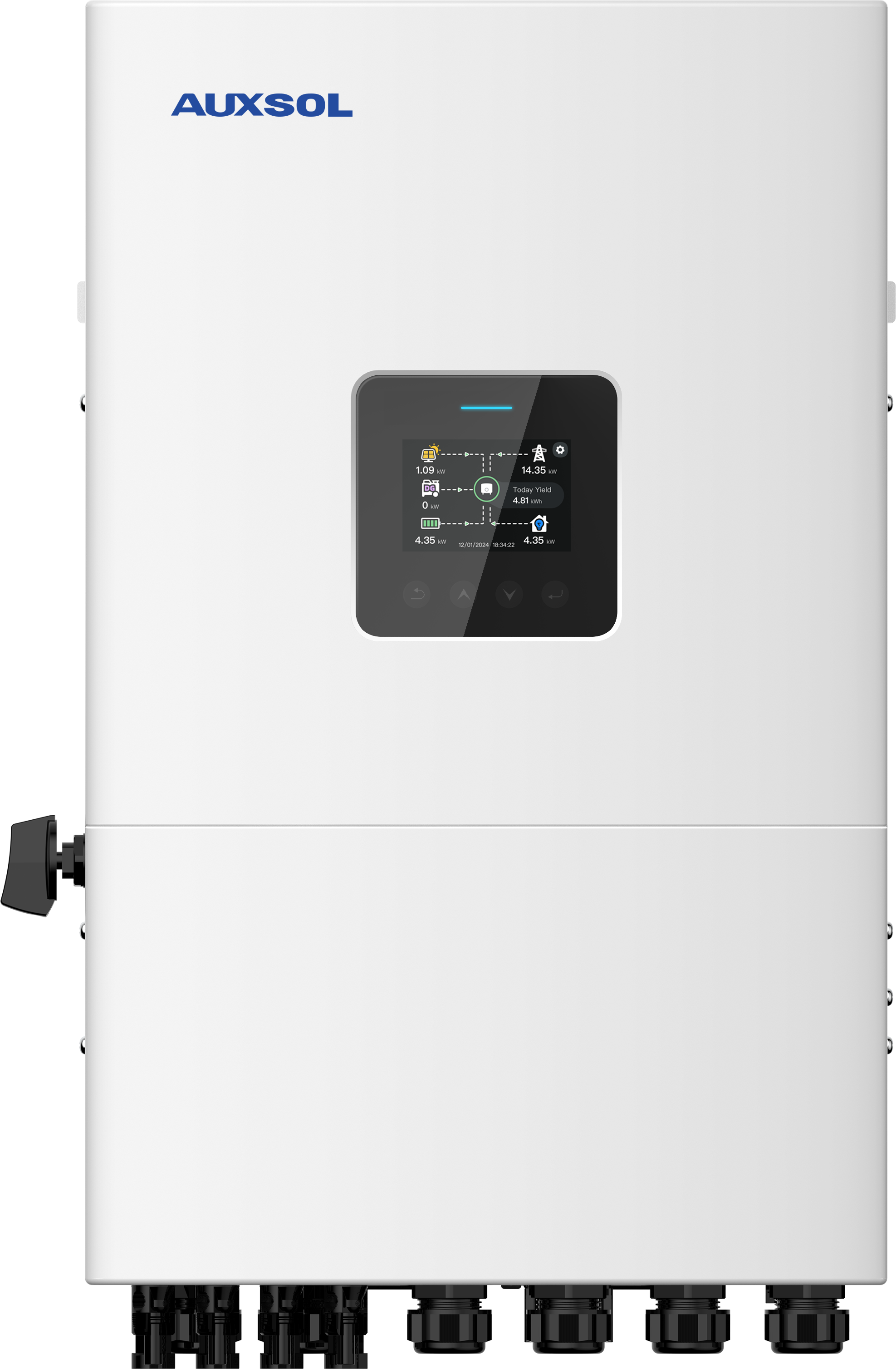Introduction
In the dynamic landscape of modern power management and renewable energy integration, 3-phase hybrid inverters have emerged as pivotal components. These sophisticated devices blend the functionality of on-grid inverters with advanced energy storage and management capabilities, offering unparalleled efficiency and flexibility across diverse power applications.
How 3-Phase Hybrid Inverters Operate
1. Direct current - Alternating current Conversion
At their core, 3-phase hybrid inverters initiate by transforming direct current into alternating current. This conversion is typically accomplished through the utilization of power-switching components such as IGBTs or MOSFETs, operating under the principles of Pulse Width Modulation technology. The process involves the rapid toggling of these switches to generate an approximately sinusoidal output waveform.
2. Energy Storage Integration
A distinguishing feature of 3-phase hybrid inverters is their seamless interface with energy storage systems, commonly batteries. They can not only charge the batteries when there's surplus power from renewable sources like solar panels but also discharge them to supply power as required. This is made feasible by a bi-directional direct current-direct current conversion stage that facilitates energy transfer between the battery and the direct current bus.
3. Power Management
Equipped with intelligent power management systems, 3-phase hybrid inverters can monitor and control power flow from multiple sources, including the grid, solar panels, and generators. By analyzing available power and load demands, they optimize energy usage to ensure peak efficiency and reliability.
Advantages of 3-Phase Hybrid Inverters
1. Enhanced Energy Self-Consumption
For households and C&I entities with solar power setups, 3-phase hybrid inverters enable greater self-consumption of the solar-generated energy. Excess energy produced during the day can be stored in batteries and utilized during periods of low solar production or at night, thereby reducing dependence on the grid.
2. Backup Power Provision
In the event of a grid outage or blackout, 3-phase hybrid inverters, when paired with adequate battery capacity, can offer backup power to critical loads. This ensures the continuous operation of essential appliances and equipment, enhancing the reliability and resilience of the power supply.
3. Improved Power Quality
These inverters are engineered to deliver stable and high-quality alternating current power output. They can regulate voltage and frequency within a narrow range, minimizing harmonic distortion and providing a clean power supply for sensitive electronic devices.
4. Grid Support and Interaction
3-phase hybrid inverters can interact with the power grid in a bidirectional manner. They can feed excess power into the grid when local generation exceeds load demand and draw power from the grid when necessary. This aids in balancing the power grid and contributing to the overall stability of the power system.
AUXSOL's ASG-(3.6-12)TL-ZL is a prime example of a top-tier 3-phase hybrid inverter. This model is designed to meet the energy needs of various applications, from small-scale commercial setups to residential complexes with high-power demands.
1. High-Performance Conversion
The ASG-3.6-12)TL-ZL excels in direct current-alternating current conversion, boasting high-efficiency ratings. It can effectively convert the direct current power from connected solar panels or energy storage systems into high-quality 3-phase alternating current power. This ensures that the electrical devices connected to it receive a stable and reliable power supply, minimizing the risk of damage due to power fluctuations.
2. Energy Storage Compatibility
This inverter is well-equipped to interface with different types of energy storage systems. It can precisely control the charging and discharging of batteries, optimizing the utilization of stored energy. Whether it's a lithium-ion or lead-acid battery system, the ASG-(3.6-12)TL-ZL can manage the power flow efficiently, enhancing the overall energy-saving capabilities of the system.
3. Intelligent Power Management
AUXSOL has integrated advanced power management features into the ASG-(3.6-12)TL-ZL. It can monitor real-time power generation from solar panels, the state of charge of the battery, and the power consumption of the connected loads. Based on this data, it makes intelligent decisions to ensure that power is distributed optimally. For instance, during peak sunlight hours, it will prioritize using solar-generated power for immediate consumption and charging the battery, while during low-light or high-demand periods, it will draw power from the battery or the grid as required.
Applications of 3-Phase Hybrid Inverters
1. Residential Solar Systems
In homes, 3-phase hybrid inverters like the ASG- (3.6-12)TL-ZL are used to integrate solar panels and battery storage. They enable homeowners to maximize the use of solar energy, reduce electricity bills, and have backup power during outages. The ASG-(3.6-12)TL-ZL's ability to handle higher power loads makes it suitable for larger households with multiple high-power appliances.
2. Commercial and Industrial Facilities
Commercial and industrial plants can benefit significantly from 3-phase hybrid inverters. The ASG-(3.6-12)TL-ZL can power large motors, machinery, and other high-power equipment, while also managing energy storage for peak shaving and load leveling. Its intelligent power management features help C&I entities optimize their energy consumption, leading to cost savings and improved operational efficiency.
3. Microgrids
In microgrid applications, 3-phase hybrid inverters play a crucial role in connecting distributed energy resources, such as solar, wind, and batteries, and managing the power flow within the microgrid. The ASG-(3.6-12)TL-ZL can contribute to the stability and autonomy of the microgrid, especially in remote or off-grid locations. Its high-performance conversion and energy storage management capabilities ensure that the microgrid can operate smoothly, even during challenging conditions.
4. Renewable Energy Power Plants
For large-scale renewable energy power plants, 3-phase hybrid inverters are essential for converting the direct current power from solar or wind farms into alternating current power for grid connection. The ASG-(3.6-12)TL-ZL, with its high-capacity conversion and grid-interaction capabilities, can help power plants integrate more effectively with the grid, ensuring a stable and reliable power supply.
Conclusion
3-phase hybrid inverters, especially models like AUXSOL's ASG-(3.6-12)TL-ZL, are indispensable in the modern energy ecosystem. Their ability to integrate renewable energy sources, manage energy storage, and provide reliable power makes them a top choice for a wide array of applications. As the world continues to transition towards clean and efficient energy, 3-phase hybrid inverters will play an increasingly crucial role in shaping the future of the energy landscape.

